
Arts & Culture | Sculpture | Gateway Community College
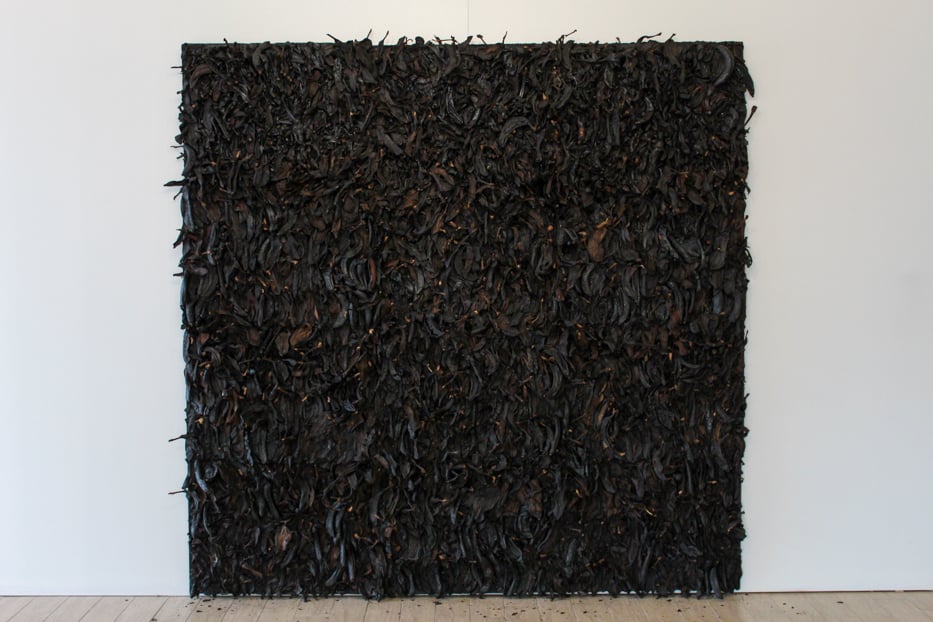 Bananas, Bananas, Bananas by Howard el-Yasin. Photos Kapp Singer.
Bananas, Bananas, Bananas by Howard el-Yasin. Photos Kapp Singer.
Bananas baked to a black crisp slowly slough off the wall. Peels overlap and intertwine. The expanse at once appears to be a jagged, incinerated forest in miniature, a fungus twisting and expanding with a mind of its own, and a soft, high pile carpet. At the edges of the 7.5 foot square piece, the charred fruits abruptly stop, forming a stark border interrupted only by a few fibrous tendrils.
The sculpture, entitled Bananas, Bananas, Bananas, is one of three pieces by Westville-based artist Howard el-Yasin included in the new exhibition Material Worlds at Gateway Community College’s NewAlliance Foundation Art Gallery, located at 20 Church Street. Curated by Noé Jimenez, the show also contains paintings by John Keefer and Douglas Degges. It runs January 17 to February 26, and an opening reception will be held on January 25 from 4:00 to 7:00pm.
“It’s intended to have both a soothing and overwhelming effect,” el-Yasin said. “Particularly when you think about bananas in the global economy.”
The piece was previously exhibited in 2022 at Real Art Ways in Hartford, and on Thursday, el-Yasin was at the NewAlliance Foundation Art Gallery putting the final touches on the sculpture installation. Charred banana peels were spread out across a plastic folding table—some fatter, some slimmer, some broken into tiny fragments, and Chiquita stickers poking out here and there. After searching for the right one, the artist methodically hot-glued it to the wall.
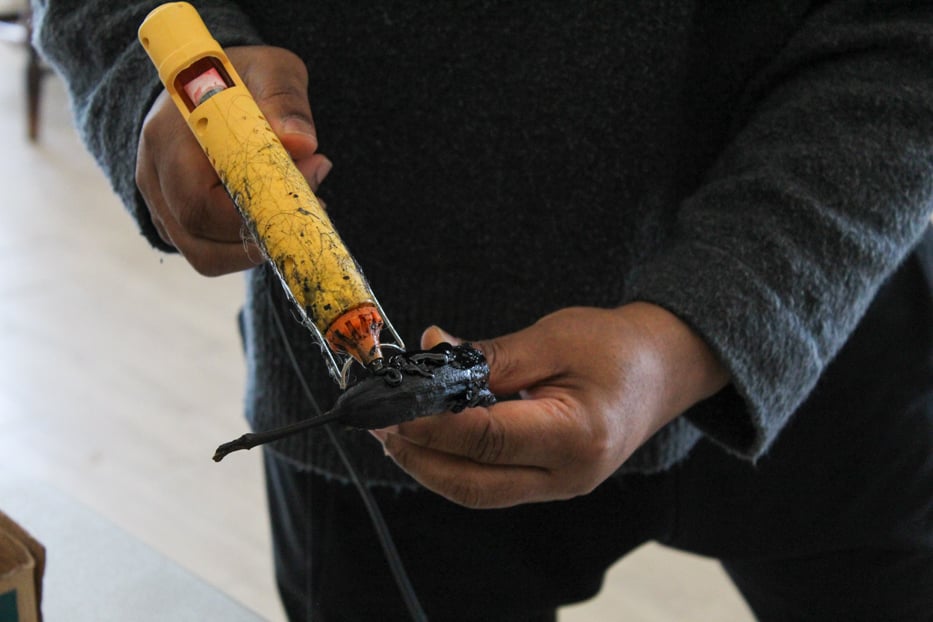
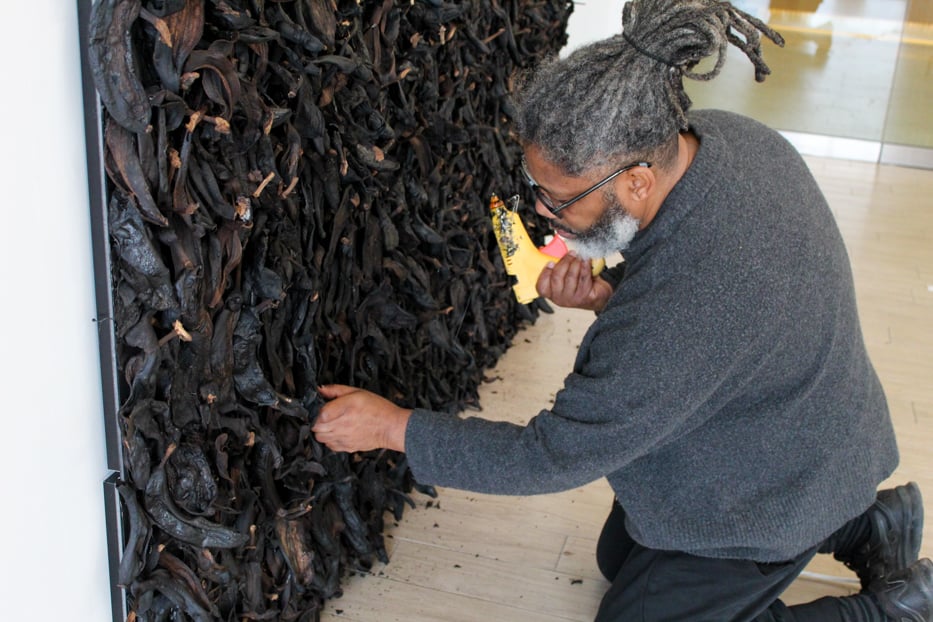 El-Yasin installing Bananas, Bananas, Bananas.
El-Yasin installing Bananas, Bananas, Bananas.
El-Yasin, much of whose art practice is based around collecting and refashioning everyday objects, started amassing the peels in 2017 after noticing that a friend always had a banana on his desk.
“I found his practice of always starting the day with a banana interesting,” el-Yasin said.
He described realizing how such a ubiquitous fruit is often overlooked and taken for granted. Ever since then, el-Yasin has saved the peel from virtually every banana he and his partner eat, baking the peels to prevent them from decomposing.
The resulting sculpture signals at the strange nature of this massively productive global monocrop.
“Things don’t just appear in our lives,” el-Yasin said. “There’s usually some sort of sedimented history related to the thing. I think about people in the same way. We’re all embedded with sedimented histories. We don’t just arrive here in the world like magic.”
For the banana, this history includes American corporate imperialism across Latin America—the creation of so-called “banana republics”—dangerous working conditions on banana plantations, and ecological harm in both the cultivation and transportation of the fruit. The burnt, disintegrating, and layered peels in el-Yasin’s sculpture bring to the fore the fragility and tumultuousness of such a simple food. And in its monochromaticism and ceaseless repetition, the piece also gestures at the fruit’s genetic homogeneity. One variety of banana, the Cavendish, makes up 99 percent of consumption worldwide, putting it at risk of being decimated by disease outbreaks—something which has happened before with previous varieties of the fruit.
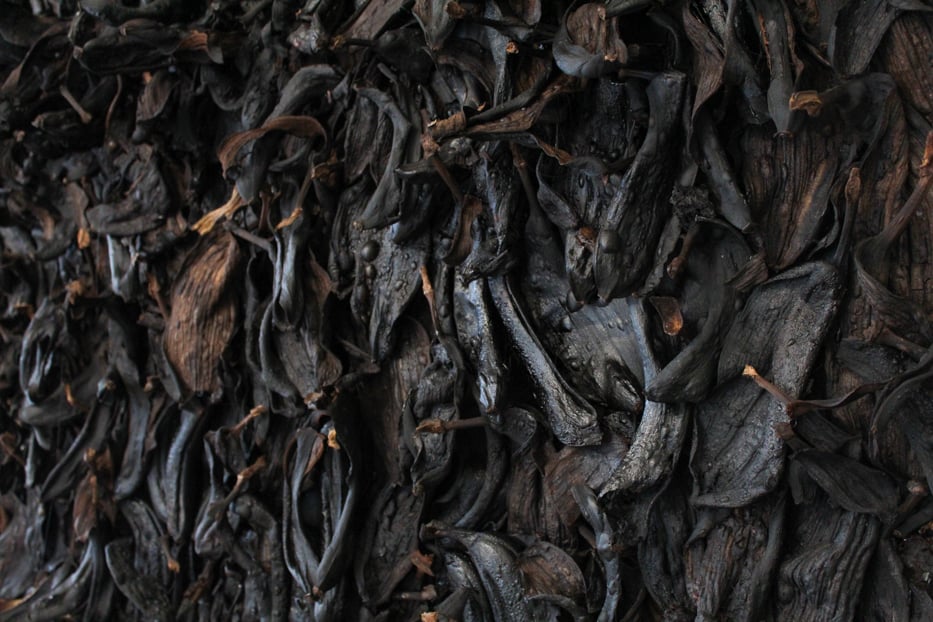
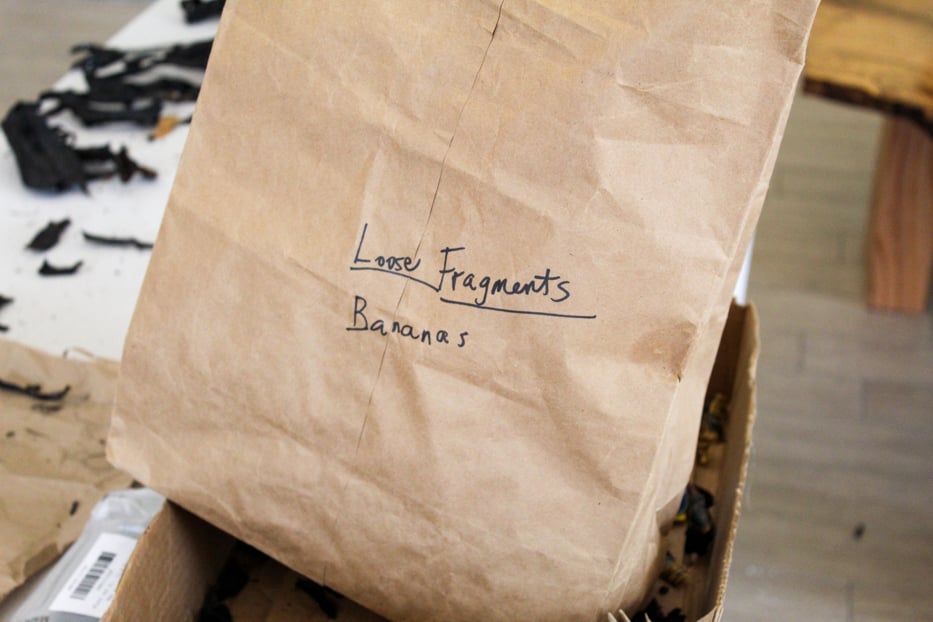
“I’m interested in capitalism and how we live in a culture where we can easily discard things because we’re removed from how the thing came to be,” said el-Yasin.
But while distilling complex global forces, the artist’s work also takes a personal tack.
In Blue Velvet Suitcase, a crisply folded blue uniform lies folded in an elegant, worn trunk. Two patches are visible on the front of the smock: “Yale University” on the right and “Housekeeping” on the left. Both the garment and the suitcase belonged to el-Yasin’s grandmother, who, after moving to New Haven from Virginia in the 1930s during the Great Migration, worked as a custodian at Yale for 20 years, among other custodial jobs.
“I was just enamored by the fact that her whole life was spent cleaning up after other people,” el-Yasin said. “This is a way to honor her and people like her, particularly Black and Brown women, whose lives are dedicated to taking care of other people and spaces for other people.”
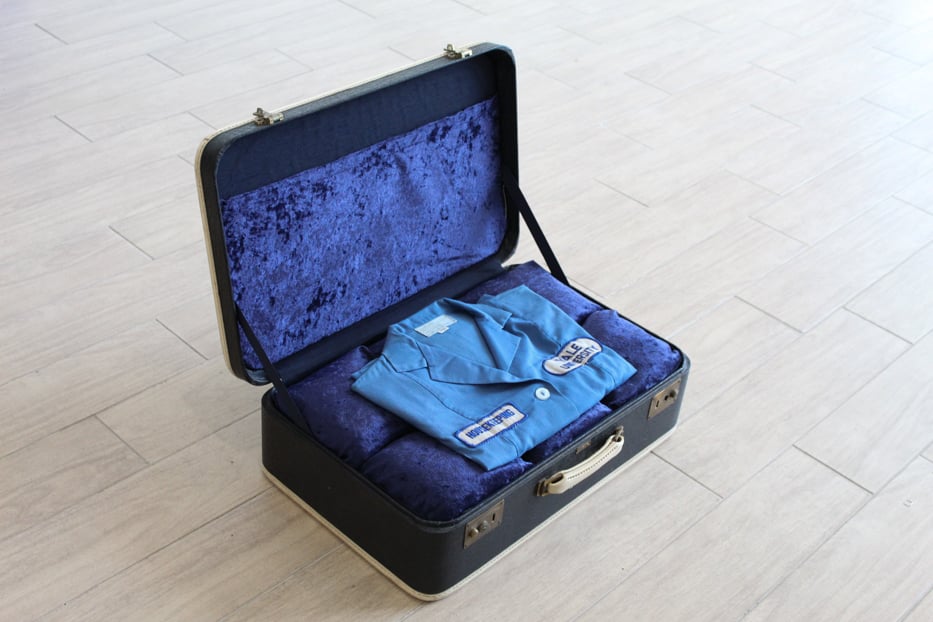
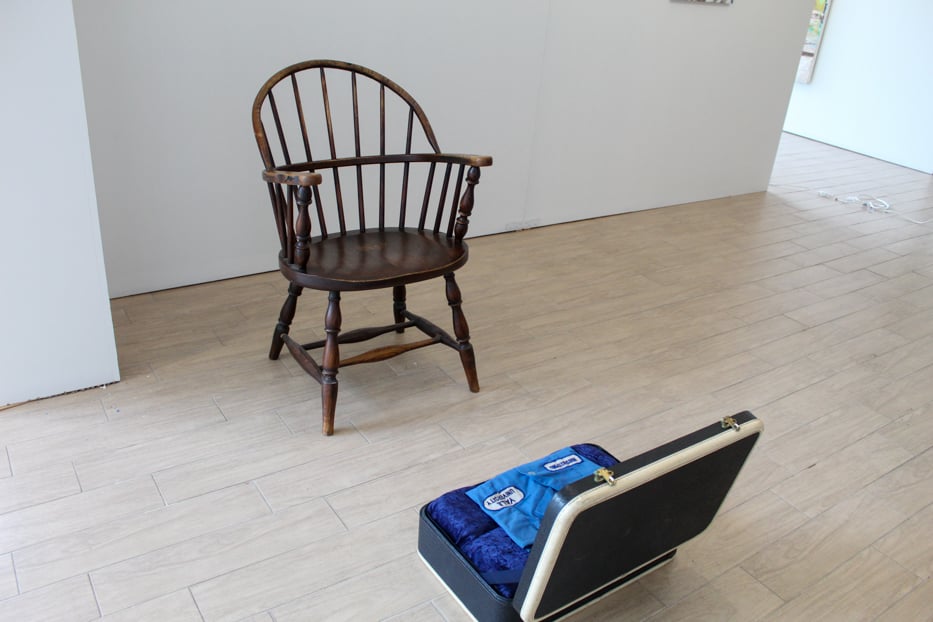 Blue Velvet Suitcase.
Blue Velvet Suitcase.
“In the same way that I’m interested in the banana peel as a thing that is part of our everydayness but which we don’t really think about, people don’t really see or think about the people who clean.”
In front of the suitcase sits a brown windsor chair, which el-Yasin took from his office at Yale after retiring from a career at the University Art Gallery and the Teaching Fellow Program. The piece of furniture, banal like the rest of the objects which the artist employs, subtly elucidates the recurrent, looping histories in the artist and his family members’ lives.
The same theme continues in el-Yasin’s third piece, Garden of Buttons, Nibs, and Cotton, a colorful assemblage of unprocessed cotton, buttons, and hypodermic needle caps, spread across three pedestals. The cotton was given to the artist by a friend, the buttons are from women in his family, and he found the needle caps in the streets of Baltimore.
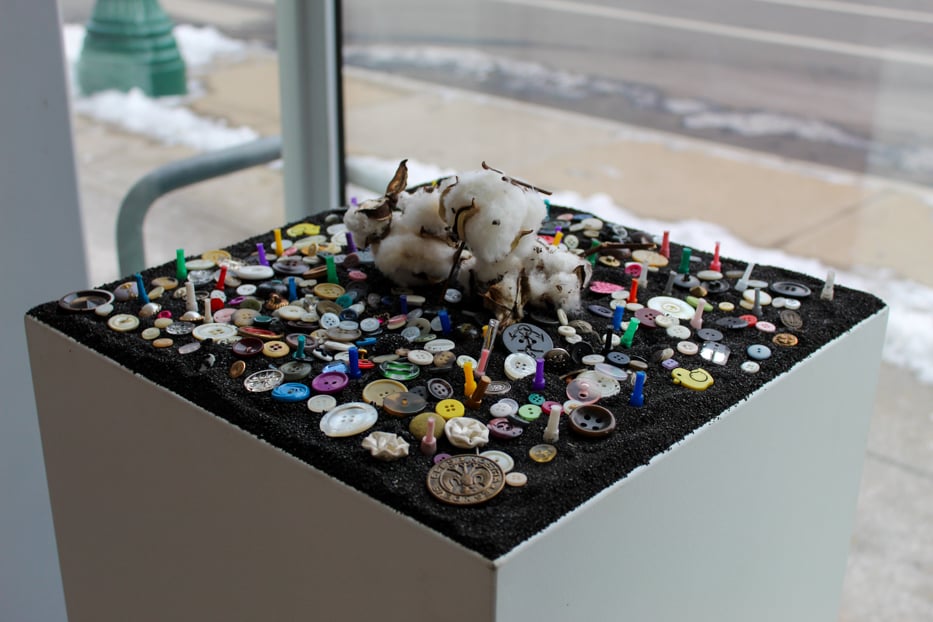 Garden of Buttons, Nibs, and Cotton.
Garden of Buttons, Nibs, and Cotton.
With the disparate collection of objects, el-Yasin is trying to call attention to those who might otherwise be invisible—people who picked cotton, family members relegated to domestic tasks, and people struggling with substance use disorder—without utilizing realistic depictions of them.
“If you stop and think about the material, my hope is that you’ll think about who is really impacted,” el-Yasin said. “Ultimately I’m trying to call attention to everyday things, hoping that something visceral will be opened up in all of us.”

